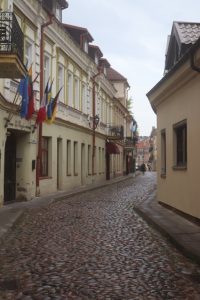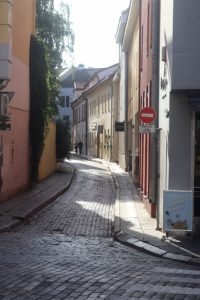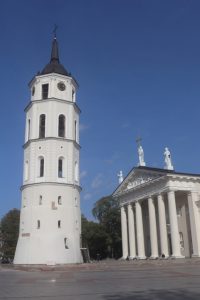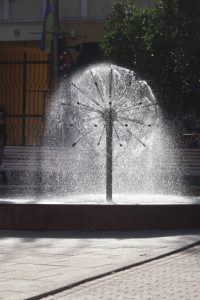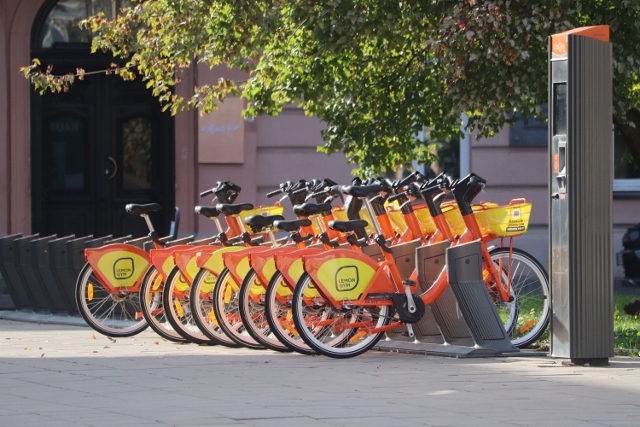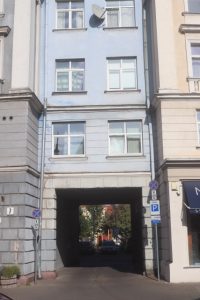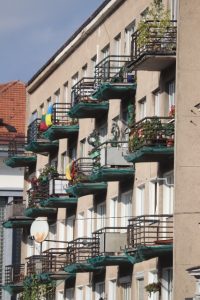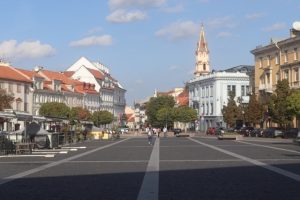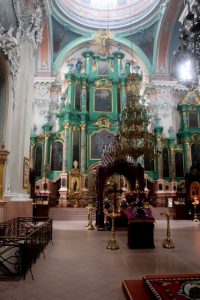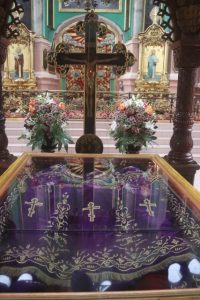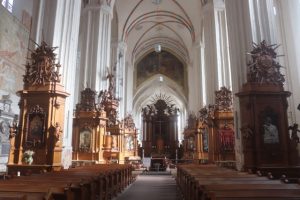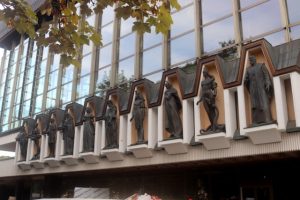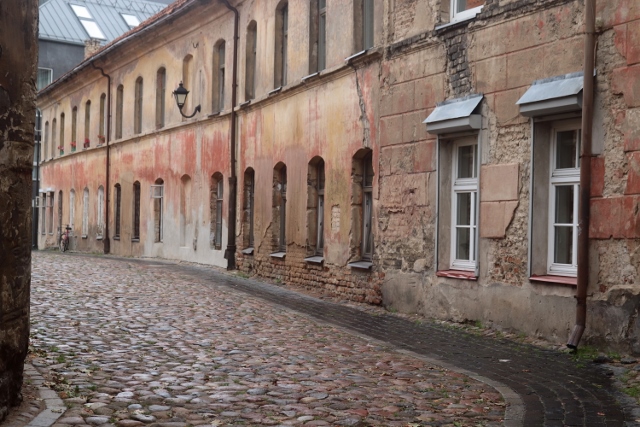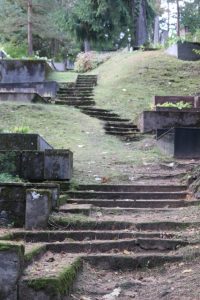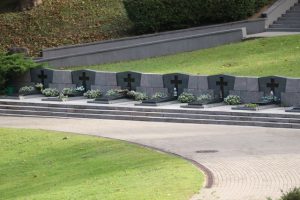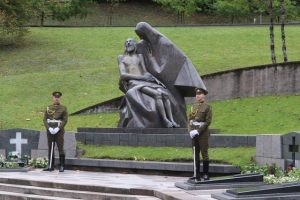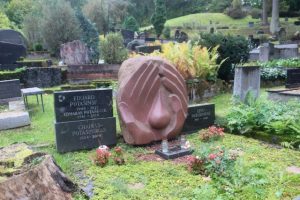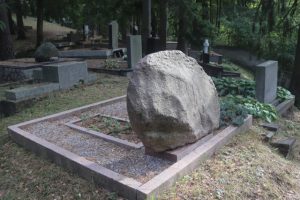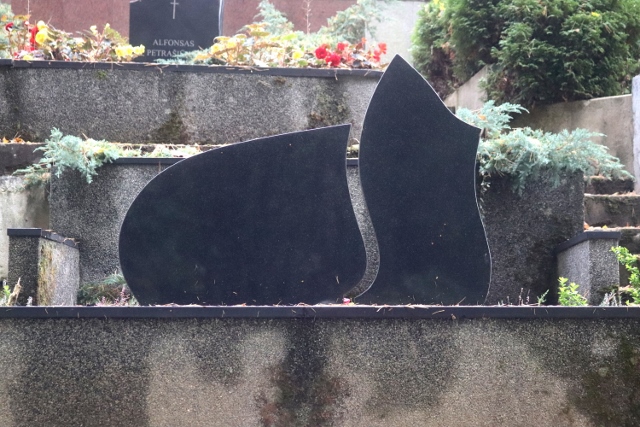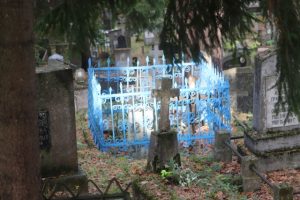Vilnius is considered one of the best preserved old towns of Europe, ‘old’ meaning medieval. It was established in 1323 and grew to become the capital of the Grand Duchy of Lithuania, which stretched from the Baltic to the Black Sea, including large parts of Belarus and Ukraine, and even Russia. However, its biggest expansion period was the 16th century, when the walls were built, the nine gates – of which one is left -, the palace of the Grand Dukes and the university. And much of the old town seems to date from this time, or a little later, demonstrating a distinctive baroque architecture. This has either been maintained very, very well over the years, or has been restored, as much of it, the stucco and the frescos of the university, for instance, look too perfect to be original. Many of the baroque churches, too, seem to have been patched up, with all the details, perhaps because during Soviet times they have been neglected. The defence works and parts of the wall are, well, horribly over-restored, really.

inside the Saint John’s church, part of the university complex, a very barroque interior – quite unlike the Lutheran churches of Estonia and Latvia
I don’t think the city suffered badly during the war, except for the two Ghettos, which have been totally destroyed. Vilnius was known as the Jerusalem of the North, with 60,000 Jews living there before 1940, of which only very few have survived. The ghettos have been rebuilt, kind of, and although my guide book insists that we have to go and have a look there, it is not particularly attractive – of course not, compared to the rest of town.
Which is nice enough – but remember we are suffering a bit from city fatigue, after all these weeks. Lots of churches, again, like Kaunas, and here especially the expansive and detailed decorations of the Baroque are fully developed. Quite a few squares provide space in between the often narrow, often cobbled, streets. And lots of people outside, and in restaurants and on terraces, there is a good atmosphere. Quite a few tourists, too, but I suppose that is unavoidable, Vilnius Old Town is also a UNESCO World Heritage Site.
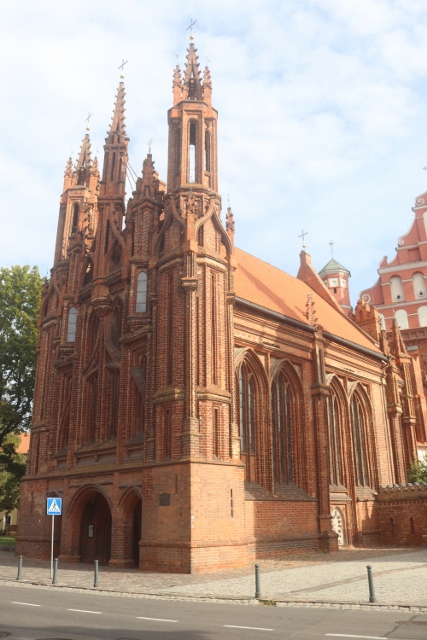
Saint Anne’s church, so beautiful that Napoleon, apparently, had wanted to ship it lock, stock and barrel to France
Outside the Old Town is the Antakalnio cemetery, originally a military burial ground. A section is devoted to Polish soldiers, another large grave contains remains from Napoleon’s Grand Armee of the early 19th century; the thirteen victims who died during independence protests in 1991 are also buried here. But the most attractive part, if you can use that term for a cemetery, is the park itself, tree-shaded, undulating, and graves everywhere. And although many of the graves are standard, crosses or simple head stones, quite a few have been adorned with elaborately sculpted stones, that wouldn’t look out of place in a modern art gallery. I am a sucker for cemeteries.
And for modern art galleries, one of which is not far north of Vilnius.


